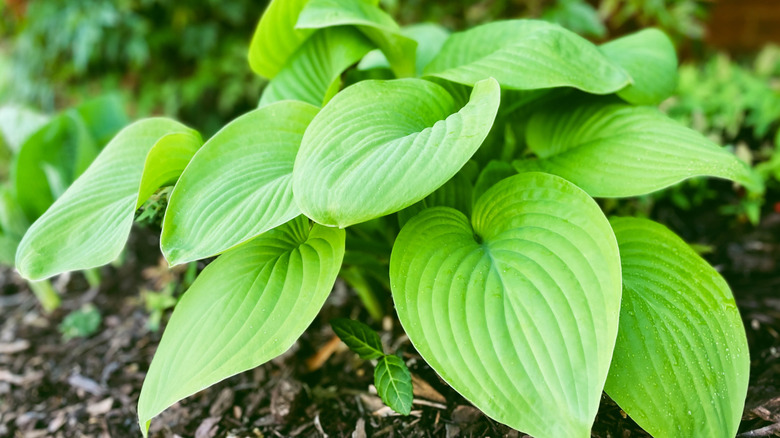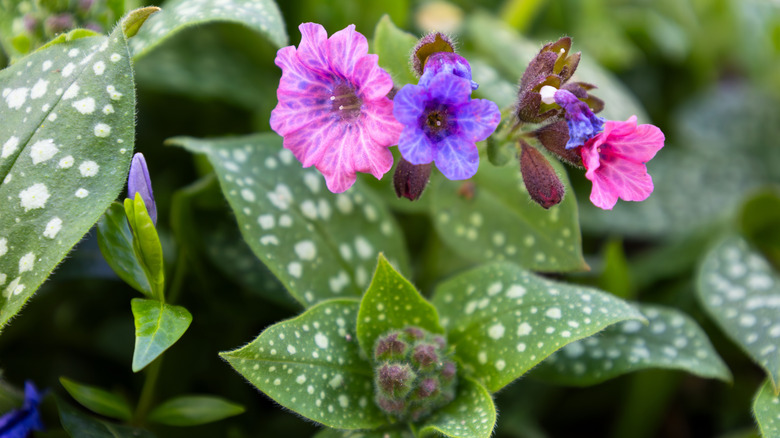Why You Should Start Growing Lungwort Next To Hostas In Your Garden
Hostas are a classic pick for shade gardens, and for good reason. They thrive in little sun and provide you with foliage in a stunning variety of hues. Pairing them with lungwort (Pulmonaria officinalis), another beautiful flowering plant that thrives in shade as an herbaceous perennial, can be just the ticket to take your garden to the next level.
Lungwort and hostas aren't just perfect together because they're some of the best plants for shade gardens – they're also a great match aesthetically. Both plants are grown primarily for their show-stopping leaves. Hostas have solid color foliage in shades of greens, blues, golds, and creams, or variegated options with a combination of those hues. Lungworts, on the other hand, are famous for the cream-colored spots that dot their green lung-shaped leaves. This makes them a great way to add a patterned element to shady woodland gardens, where many other plants can struggle to thrive.
Creating a garden environment for hostas and lungwort to thrive together
In addition to the fact they both thrive in deep to partial shade locations, lungworts and hostas also have similar planting mediums. Both plants grow best in fertile soil with good drainage. If you're growing them together, try to ensure your soil has a neutral pH, as hostas grow best in acidic to neutral soil, while lungworts thrive in alkaline to neutral soil.
While neither lungworts nor hostas are native to the United States, they are both hardy in much of the country. Lungworts can grow in USDA zones 3 through 8, and hostas are hardy in zones 3 through 9. Neither plant is considered invasive, overly aggressive, or fast growing. However, to keep your hostas from spreading and outgrowing their space, you can dig up and divide the plants as needed. Depending on where you live, you may need to provide your shade garden with some protection from predators. While lungworts are rarely bothered by deer or rabbits, many animals eat hosta plants.
Even though lungworts and hostas are both grown primarily for their leaves, it would be a mistake to forget about their beautiful flowers. Hosta blossoms generally appear in the summer and are white or purple, while lungworts bloom in winter or spring depending on the region. Their color-changing flowers are generally shades of pink and blue. If you've been trying to figure out how to make your woodland garden more pollinator friendly, then lungworts and hostas are perfect additions. The flowers of both plants are huge hits with a variety of pollinators, and hostas can even attract hummingbirds.

